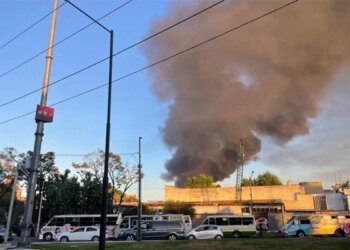Select Language:
Top 30 Most Dangerous Countries for Travelers in 2025
Travelers planning international trips should be aware of countries where safety concerns are most prevalent. Based on recent assessments by CEOWORLD magazine, here are the 30 nations considered the most dangerous for travelers in 2025. These destinations pose various risks, from ongoing conflicts to high crime rates, making them less suitable for leisure or business visits.
1. Somalia 🇸🇴
Struggling with prolonged armed conflict and internal instability, Somalia remains one of the most perilous destinations. Travelers face risks from piracy along the coast, militant insurgencies, and kidnapping threats. The lack of effective government control further complicates safe travel within the country.
2. South Sudan 🇸🇸
South Sudan’s ongoing civil conflict has led to widespread violence, creating a highly volatile environment. Armed clashes, ethnic tensions, and a fragile economy make it extremely unsafe for tourists. Humanitarian crises persist, with limited access to medical care and essential services.
3. Ukraine 🇺🇦
Although home to a rich history and culture, Ukraine’s eastern regions remain embroiled in conflict following ongoing tensions with Russia. Visitors should exercise extreme caution, especially near conflict zones. Military activity and civil unrest continue to pose significant dangers.
4. Libya 🇱🇾
Libya’s political instability and ongoing fighting between rival factions have rendered most parts of the country unsafe. Kidnappings, terrorism, and unpredictable armed clashes are common, making it a high-risk destination for travelers.
5. Sudan 🇸🇩
Despite some efforts to rebuild stability, Sudan continues to face internal conflicts and political unrest. Crime, violence, and shortages of basic supplies make the country dangerous for visitors. Travelers are advised to stay away from conflict zones.
6. Pakistan 🇵🇰
While Pakistan offers stunning landscapes and cultural treasures, security concerns persist. Terrorist activities, border tensions, and high crime rates in certain areas necessitate caution. Travelers are advised to research specific regions thoroughly before visiting.
7. Afghanistan 🇦🇫
After decades of war, Afghanistan remains unsafe due to ongoing violence, insurgent activities, and political instability. The threat of terrorism, kidnapping, and denied access to healthcare complicates travel plans in the region.
8. Myanmar 🇲🇲
Political unrest following recent military coups has led to violent clashes and civil disobedience. Travelers face risks from armed conflict, protests, and limited access to emergency services in certain parts of the country.
9. Iraq 🇮🇶
Despite efforts to stabilize the nation, parts of Iraq remain volatile. Terrorist threats, insurgent attacks, and kidnappings are risks travelers should be aware of. Travel to the northern regions is especially restricted.
10. Lebanon 🇱🇧
Economic collapse, political unrest, and occasional violence have marked Lebanon in recent years. Demonstrations, protests, and security incidents have led many governments to advise against non-essential travel.
11. Palestine 🇵🇸
The Israeli-Palestinian conflict continues to affect the safety landscape in the region. Travelers should exercise caution, especially in conflict-prone areas, and stay updated on safety advisories.
12. Yemen 🇾🇪
Yemen’s ongoing civil war, humanitarian crises, and threat of terrorism have made it one of the most dangerous countries for travelers. Infrastructure is fragile, and access to essential services is limited.
13. Syria 🇸🇾
Ongoing conflicts, insurgencies, and a complex political landscape create hostile conditions for visitors. Most parts of Syria remain unsafe due to military activity and security concerns.
14. Belarus 🇧🇾
Political tensions and crackdowns on dissent have increased risks associated with visiting Belarus. Travelers should be cautious, particularly regarding participation in protests or exposure to law enforcement actions.
15. North Korea 🇰🇵
While North Korea is isolated, travelers risk arrest or detention for actions that are acceptable elsewhere. Strict regulations and the unpredictable political environment make it a highly restrictive and risky destination.
16. Haiti 🇭🇹
Political instability, gang violence, and economic hardship have destabilized Haiti. Travelers face risks of kidnapping, assault, and civil unrest, especially in urban and rural areas outside tourist zones.
17. Honduras 🇭🇳
Crime rates are high, with frequent reports of violence, robberies, and kidnappings. Tourists should travel with caution and avoid certain areas known for gang activity.
18. Ethiopia 🇪🇹
Political unrest and conflict in certain regions have led to increased violence. Travelers should stay informed about regional stability and avoid areas with active conflicts.
19. Democratic Republic of the Congo 🇨🇩
Conflict, armed militias, and health crises make DRC unsafe for tourists. The ongoing instability hampers access to many regions, and crime is prevalent.
20. Central African Republic 🇨🇫
Ongoing insurgencies, violence, and political unrest present significant risks. The security situation remains volatile, discouraging all but essential travel.
21. Papua New Guinea 🇵🇬
Remote areas face issues from tribal conflicts, crime, and health risks like malaria. Travelers should seek guidance and stay within secure zones.
22. Venezuela 🇻🇪
Economic collapse and political turmoil have led to shortages of essentials, high crime, and civil unrest. Travelers should exercise caution and stay informed about current conditions.
23. Iran 🇮🇷
Political tensions, sanctions, and restrictions on foreign visitors contribute to safety concerns. Travelers should be aware of local laws and avoid activities that could lead to detention.
24. Bangladesh 🇧🇩
While Bangladesh boasts cultural richness, it faces challenges with crime, political instability, and natural disasters, requiring tourists to remain vigilant.
25. Burkina Faso 🇧🇫
Growing insecurity, terrorism, and fragile governance make Burkina Faso unsafe. Foreign nationals are advised to avoid non-essential travel.
26. Mali 🇲🇱
Terrorist attacks, kidnapping threats, and political instability have spread throughout Mali, especially outside Bamako, the capital.
27. Nigeria 🇳🇬
High crime rates, terrorism, especially in the north, and kidnapping risks make Nigeria a dangerous destination for travelers. Caution is strongly advised.
28. Armenia 🇦🇲
Regional conflicts, particularly related to Nagorno-Karabakh, pose risks of border tensions, military clashes, and instability in parts of the country.
29. Azerbaijan 🇦🇿
The Nagorno-Karabakh conflict continues to escalate, leading to heightened military activity and safety concerns in border areas.
30. Trinidad and Tobago 🇹🇹
While generally known for beautiful beaches and vibrant culture, certain neighborhoods experience high crime rates, especially involving violent crimes, requiring travelers to remain vigilant.
Image Source: CEOWORLD magazine 2025
The safety landscape for international travelers continues to evolve. Travelers should always consult current travel advisories from government sources and exercise caution when considering visits to high-risk countries. Staying informed and prepared is essential for ensuring personal safety in any destination.







